| |
|
| |
Slowly, tentatively, I dipped my feet into the fish tank sitting on the sidewalk in Siem Reap. The fish could hardly wait ... they crowded me, hungry mouths zeroing in on my toes. The “doctor fish” were at work.OMG, did it ever tickle. Yikes. But after a minute, my sensory endings calmed down and I just sat there in the city’s night market, letting them do their work.
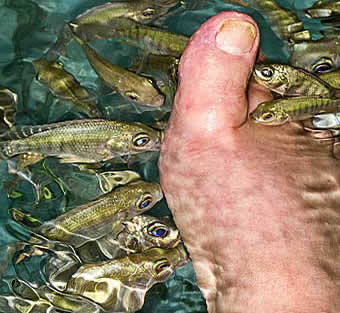
|
|
 |
|
Doctor fish 'massage.' Tiny fish nibble dead skin off a person's feet. It tickles like mad. In Siem Reap's Night Market, $2 US gets you a can of beer and 20 minutes with the fish in a tank. |
The night market here is the center, the mecca, of Cambodia’s tourist scene. In other Cambodian cities, the markets are really for locals ... hot, sweaty, claustrophobic places jammed with pots and pans and cheap clothing and other goods of daily life. I was beginning to think there really was nothing for a tourist to buy in this country.
But in case you have missed the point in Siem Reap, there are huge, glowing, three-foot-high neon signs hanging across the street. Like, every 50 feet or so.
The “doctor fish” are part of the scene. Along with silver shops, clothing stalls, street food. You name it.
Why here? Because Siem Reap is where Angkor Wat is located. And that is what virtually every one of Cambodia’s 2.8 million visitors a year come to see.
| |
 |
|
 |
|
| |
Political sign in Kratie, Cambodia.
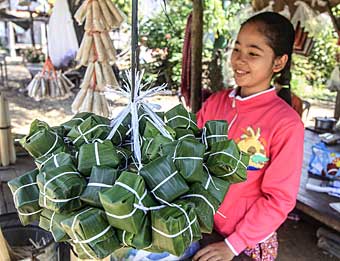 Packets of sticky rice with banana and coconut, wrapped in banana leaf and steamed. For sale along a road in Kratie, Cambodia. Packets of sticky rice with banana and coconut, wrapped in banana leaf and steamed. For sale along a road in Kratie, Cambodia.
|
|
Octopus Root tree at Ta Prohm on the Angkor complex in Cambodia.
Ta Prohm is also called the jungle temple because its buildings are slowly being covered by the roots of spung trees (Tetrameles nudiflora). Built in the late 12th and early 13th centuries. it was founded by the Khmer King Jayavarman VII as a Buddhist monastery and university. The combination of trees growing out of the ruins and the jungle surroundings have made it one of Angkor's most popular temples with visitors. The temple became even more popular when it was used as a location in the 2001 Hollywood film Tomb Raider starring Angelina Jolie.
|
|
Okay, so you’ve done the ruins ... the main temple, the secondary temples and, of course, the place with all the tree roots made unfortunately infamous by a truly awful, based-on-a-video-game movie staring Angelina Jolie.
And now it’s night. But you really don’t feel like eating in the hotel. Again.
So you pop $2 for a tuk tuk (rickshaw pulled by a motorcycle) and say, “Night Market,” and the guy heads off you swear in the wrong direction, then 10 minutes and who knows how many turns later, there you are, under all those neon signs.
| |
 |
|
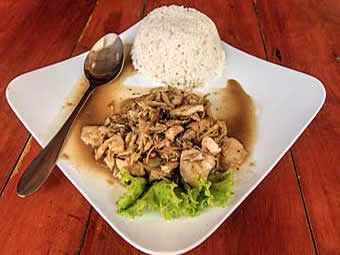 |
|
| |
Sour soup, a Khmer dish that can have a variety of meats. In this case, the soup has chicken, lime leaves and banana flowers. |
|
Mekong snakefish cooked with ginger and served with rice, a popular Cambodian dish.
|
|
Yeah, I fell for the fish thing. The fish are tiny carp, maybe an inch or two long and (it wouldn’t work otherwise) toothless. They eat the dead, flaking skin off your feet without touching the rest of your flesh.
Yeah, Ewwwww. Yes, I know it’s controversial on this side of the Pacific. The tanks aren’t cleaned after every person (like sure, right) and there’s some question about what the fish would eat here if it wasn’t pre-owned people skin.
But I was impressed that the woman first made sure I didn’t have insect repellent or suntan lotion on my legs. And the fish, well, they were VERY appreciative. And after, my feet felt SO clean.
So, $2 gets you 20 minutes (or as long as you can take it) with the little hungry critters and also a can of beer. Cambodia seems to be one of the last places on earth where an American dollar goes the distance.
From here, we dived into the market. I was looking for a pair of lightweight pants. Something that might fit me (I’m not small) in a country where size zero is considered large. But I found them, for $7 apiece. And they look great.
| |
 |
|
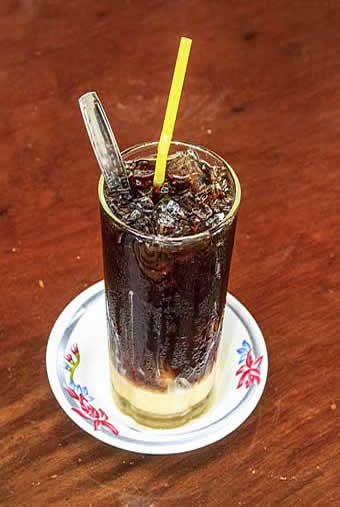 |
|
| |
Woman on street cooks pork and shrimp for sale in Phnom Penh, Cambodia. |
|
Cambodian style iced coffee with sweet condensed milk on the bottom. |
|
Also a t-shirt, scarves, earrings and assorted other whatnot. You could, if you tried very hard, spend serious dough here. There’s silver trinkets and wall hangings and paintings and furniture to die for and this quilt shop where they make bedding to order.
Mostly, the fun is to just wander and window shop.
And then eat.
| |
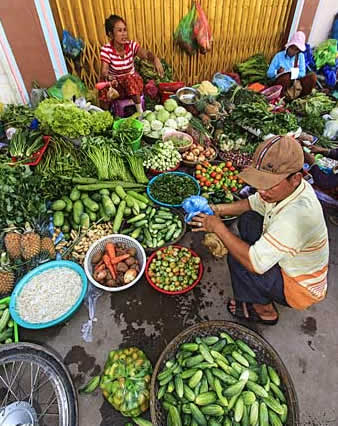 |
|
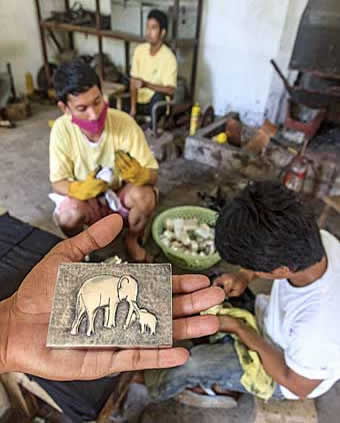 |
|
| |
Market in Kratie, Cambodia.
|
|
Artisan Angkor, a workshop that trains young, uneducated and sometimes disabled Cambodian youths in craftwork including wood carving, lacquerware, silver work and silk painting. Here, young men work on silver. |
|
Food on the street is for the somewhat adventurous. But it’s all either grilled over coals or cooked to a crisp in a wok. I figure the heat is enough to kill just about anything potentially harmful.
One night, we had stir fry. Another it was ribs. Just about everything is priced in US dollars and costs about $1.50. The exception was the whole, stuffed red snapper which fed two of us and ran $6. We topped that off with a young coconut. They cut a hole, add a straw and you quench your thirst.
Finally, shopped out and fed, we hailed another tuk tuk and headed back to our hotel, where the fish-free swimming pool awaited.
INFO
Cambodia has two seasons ... wet and dry. Avoid the wet season (June - November) at all costs. Many roads, even main ones, are dirt and under construction. The mud can be axle deep.
Cambodia is not far from the Equator. It is HOT and steamy and temperatures can reach 100 degrees, especially during wet season. If you can, stay in hotels with swimming pools.
Don’t expect slick organization. This country was taken back to the stone age by the Khmer Rouge in the late 1970s. Most people over 40 don’t even know what year they were born. It’s been a slow recovery. But, cell phone signals are everywhere.
The US dollar is the main currency. There really is no need to change large amounts of money. But make sure to bring a LOT of small bills ($1s and $5s) and they must be in perfect shape. No one will take any bill if it has the smallest rip. Ask for new, crisp bills at your bank.
Cambodia tourism: www.tourismcambodia.com/
ABOUT THE AUTHOR
| |
Yvette Cardozo is a writer/photographer who loves adventure and the outdoors, specifically skiing, scuba diving and cycling. If it involves interesting food (ethnic delicacies, high arctic "country food," molecular gastronomy and whatever else is interesting or weird), so much the better. She has skied in Kashmir, India, scuba dived both the Arctic and Antarctic, run a dogsled team above the arctic circle and more. She is a member of SATW (Society of American Travel Writers), TJG (Travel Journalists Guild) and NASJA (North American Snowsports Journalists Association). Her stories appear in the Chicago Tribune, NY Post, Miami Herald, Dallas Morning News, among other newspapers, along with Just For Canadian Doctors, Sport Diver and several international magazines. |
|
 |
|
|
|
|
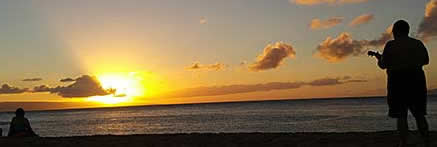




 Packets of sticky rice with banana and coconut, wrapped in banana leaf and steamed. For sale along a road in Kratie, Cambodia.
Packets of sticky rice with banana and coconut, wrapped in banana leaf and steamed. For sale along a road in Kratie, Cambodia.





